Insights
The Ultimate Guide on How to Choose a Logo for Vietnamese Businesses
On Digitals
18/11/2025
39
If you are brainstorming logo ideas, you’re likely staring at your screen, probably Googling logo examples for the third time today, and feeling a bit overwhelmed. Maybe you’ve got a fantastic business idea, or you’re finally ready to rebrand that company you started five years ago. Either way, that little visual mark that’ll represent everything you’ve built? That will matter a lot.
Finding out how to choose a logo will alleviate all these concerns and you are well on your way to the next parts of your branding journey.
What Should You Know About How to Choose a Logo?
Before you even think about colors, shapes, or whether your logo should have something unique in it, you need to do some homework. Think of this as the foundation of a house. Skip it, and everything else crumbles.
Defining Your Brand’s DNA: The Essential First Step
Here’s where most people mess up. They jump straight to design without knowing who they are as a brand. Start by asking yourself the hard questions: What does your company actually do? Why does it exist beyond making money? What’s your personality? Are you the serious, suit-and-tie type or more of a casual, “let’s grab a coffee and chat” vibe?
Your logo needs to represent all of this. If you’re a traditional Vietnamese herbal tea brand, your logo should probably feel different from a Gen Z fashion startup, right? The feeling your logo creates in someone’s mind the moment they see it is everything. Looking pretty is only half the battle, learning how to choose a logo is all about establishing an instant emotional connection to your audiences and showcasing the personal identity of your brand.
Understanding Your Vietnamese Target Audience and Market
This part is crucial, especially if you’re operating in Vietnam. What works in New York might completely miss the mark in Ho Chi Minh City.
Colors and symbols carry different meanings here. Different color combinations may have strong cultural significance in Vietnamese culture, for example. Make sure to do your research on what resonates with Vietnamese customers, or whichever your target demographic is, and what is relatable to them.
Your logo also needs to be immediately recognizable to your target audience. If you’re selling to Vietnamese millennials, their visual language is different from what appeals to older, more traditional consumers. For example, sophisticated and luxury brands may go for something simplistic and clean, while brands targeting younger audiences may go for something more stylistic and out-of-the-box.
Competitor Research: How to Ensure Differentiation
Pull up Google right now and search for businesses like yours. What do their logos look like? Are they all using blue? Do they all have similar shapes or styles? Once you have identified the patterns, do something different.
Standing out is non-negotiable in today’s crowded market. If your logo looks like everyone else’s, people will confuse you with everyone else. And confused customers don’t become loyal customers. Study your competition not to copy them, but to find the gaps. Where’s the white space you can own? What’s everyone doing that you can avoid?
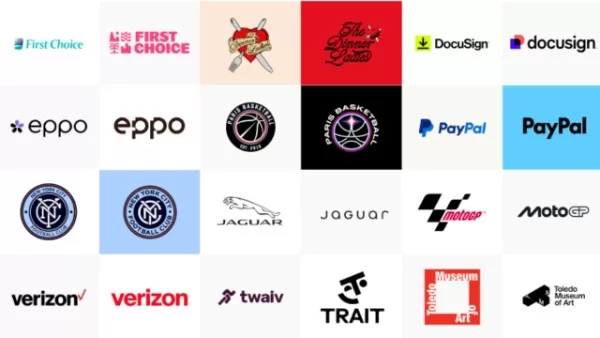
Look into the logos of the biggest brands to learn from them
Decoding the Design: How to Choose a Logo Design That Connects
This is where strategy meets creativity, where psychology meets pixels. Understanding these elements will help you make smart decisions about how to choose a logo design that actually works.
Selecting the Right Logo Type for Your Situation
Not all logos are created equal. There are actually several different types, and choosing the right one depends on your specific situation.
- Wordmarks are just your company name styled in a particular font (think Google or Coca-Cola). These work great if you have a short, memorable name and want people to remember exactly what you’re called.
- Lettermarks use initials instead of the full name (like IBM or HBO). Perfect if your company name is a mouthful. Imagine trying to fit “International Business Machines” on a business card, that would be a design nightmare.
- Pictorial marks are those recognizable symbols or icons. Apple’s apple, Twitter’s bird. These are powerful but risky for new businesses because people need to already know who you are for a symbol alone to work.
- Abstract marks are geometric or abstract shapes that don’t represent anything concrete. Think of the Nike swoosh. They’re great for creating something truly unique.
- Mascots are character-based logos. KFC’s Colonel Sanders is a classic example. They’re friendly and memorable but can feel less professional depending on your industry.
- Emblems are badges or seals with text inside a symbol. They feel traditional and established, often used by schools, government agencies, or heritage brands.
- Combination marks mix text with symbols. This is actually the sweet spot for most businesses, especially newer ones, because you get the best of both worlds: recognition through text and visual memorability through imagery.
Choose based on how established your brand is, how long your name is, and what your industry expects. A law firm might lean toward an emblem. A tech startup? Maybe an abstract mark or wordmark.
The Psychology of Color: Choosing Your Palette Wisely
Colors aren’t just pretty. They’re psychological triggers that make people feel things before they even read your name.
Blue makes people think of trust, stability, and professionalism. That’s why half the banks and tech companies on earth use it. Red showcases passion, urgency, and energy. It grabs attention and gets people more intrigued. Green connects to nature, health, and growth. Yellow is optimistic and friendly. Black is sophisticated and luxurious.
But here’s the catch: you can’t just pick your favorite color and call it a day. Your color palette needs to match your brand message and identity. If you’re a meditation app, aggressive red probably isn’t your move. If you’re selling emergency services, calming lavender might send the wrong signal. On top of that, one color is far from the end. Brands generally have multiple colors included in their branding scheme, so you also need to brush up on color theory to know more about what colors to mix with your main color choice.
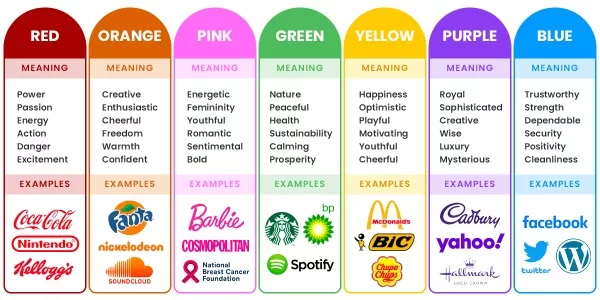
Colors stand for the brand message that you want to deliver
Shapes and Fonts: The Subconscious Message
Shapes talk to our brains in ways we don’t consciously realize. Circles and curves suggest harmony, community, and friendliness. They feel complete and safe. Squares and rectangles imply stability, reliability, and order. They’re professional and grounded. Triangles create energy and suggest direction or movement. They’re dynamic but can also feel aggressive depending on how they’re used.
Your font choice is just as important. Serif fonts (those little feet on the letters) feel traditional, trustworthy, and established. Sans-serif fonts (clean, no feet) are modern, clean, and straightforward. Script fonts can be elegant or casual depending on the style, but they’re harder to read at small sizes. Display fonts are unique and attention-grabbing but use them carefully because they can quickly feel gimmicky.
Match your shapes and typography to your brand personality. A kids’ toy company might use rounded shapes and playful fonts. A law firm would probably stick with strong, stable shapes and traditional serif typography.
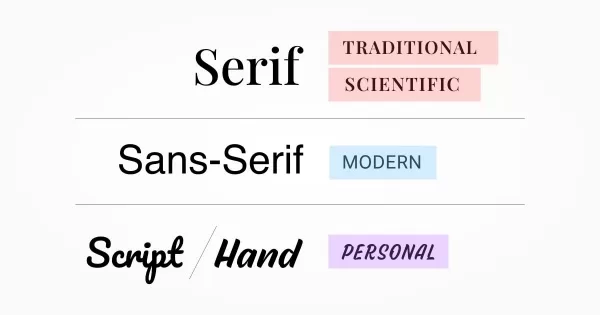
Some fonts you can use and their meanings
Simplicity is Science: Why Less can be More
Look at the most popular brands in the world, most of them have rather simple logos. Apple. Nike. McDonald’s. What do they all have in common? They’re incredibly simple, with only 2 or 3 elements.
When you overload a logo with details, gradients, multiple colors, and intricate illustrations, you’re actually making it weaker. People’s brains have to work harder to comprehend everything, so they just move on. What you need to take away from this is to keep your design clean and easily digestible. If you can’t recognize what your logo is when it’s the size of a postage stamp, it’s too complicated.
The Five Must-Ask Questions When Choosing Your Final Design
Okay, you’ve narrowed it down to a few options you really like, but that is not all you need to know when learning how to choose a logo. Before you commit, run each one through these five questions. If any answer is “no,” keep working.
Is It Versatile and Scalable Across All Media?
Your logo is going to live everywhere, on your website’s tiny favicon, a massive billboard on Nguyen Hue Street, embroidered on staff uniforms, on your social media profile picture, product packaging, email signatures, and more.
Does your logo look equally good in all these places? Because if it only looks good in one specific size or format, you’ve got a problem. Also, test it in full color, black and white, and single-color versions. You’ll need all these variations. If your logo falls apart when you remove the color, it’s not versatile enough. The best logos work even when they’re just black silhouettes.
Is It Timeless or Trendy?
Trends are tempting. Right now, everyone’s into gradients, or minimalism, or whatever’s hot this month. But here’s the thing about trends, they fade and they can fade fast.
Your logo needs to last years, ideally decades, especially if you plan to etch your name into the market. Redesigning your logo every two years because it looks dated is expensive and confusing for your customers. Besides, it also poses a huge risk for your brand because you will have to feature yourself in the fresh coat of paint all over again. They focused on timeless design principles instead of chasing what was cool in the moment.
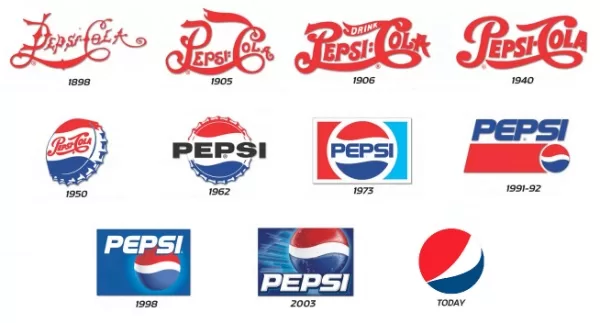
Pepsi’s logo changes reflect both their growth and market trends
Does It Translate Well Without Words?
This is especially important if you have a longer company name. Can someone understand what industry you’re in or what your brand represents just by looking at the symbol or icon?
Now, this doesn’t mean every logo needs to be literal, but there should be some visual logic that helps people understand or remember you. A well-designed logo should be able to stand on its own visually, even if someone doesn’t immediately read the company name.
This becomes super important as you grow. Eventually, if you’re successful, you might be able to drop the text entirely and just use the symbol (like Nike did). But that only works if the symbol is strong enough to carry that weight and your brand has grown enough to be a household name.
Get Unbiased Opinions
You may consult ideas from your team, maybe people around you, and acquaintances in the industry about your logo. But that’s only barely scratching the surface, because it’s the customers that you need to know about.
Show your logo to potential customers. Ask them what feeling it gives them. Is it clear what your business does? Do they find it memorable? What words come to mind when they see it? Their gut reactions will tell you if you’re on the right track or if you need to go back to the drawing board.
You can do so by rolling out the new design steadily, maybe on your latest products, and finally replacing the old logos completely if the reception is positive. Real feedback from real people is invaluable. Don’t skip this step.
Ready to Launch? Practical Steps After You Choose a Business Logo
Seeking Professional Guidance: Designer vs. DIY
Let’s talk about the elephant in the room. Should you hire a professional designer or use one of those online logo maker tools?
Here’s the honest truth: it depends on your situation and budget. DIY tools like Canva or online logo generators are fast and cheap. For very simple needs or if you’re bootstrapping a side hustle, they can get you something decent quickly.
But if you’re serious about building a scalable business? If you’re planning to compete in a crowded market? Invest in a professional designer. They bring strategic thinking, not just pretty pictures. They understand how to choose a logo for your business based on market research, psychology, and years of experience. They’ll create something unique that actually works across all those different applications we talked about earlier.
A professional logo isn’t an expense. It’s an investment in your brand’s future. The difference in quality and strategic insight is worth every dong.
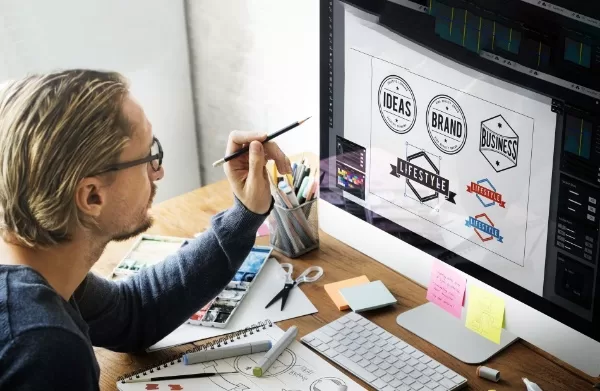
Choose the perfect designers to work on your logo
Protecting Your Brand: Trademarks and File Formats
Two final practical things you need to handle before you launch:
First, make sure you get the right file formats. You need vector files (AI, EPS, or SVG formats). These are infinitely scalable without losing quality, which means your logo will look crisp whether it’s on a business card or a bus. If your designer only gives you JPEGs or PNGs, ask for the vector files. They’re essential.
Second, consider trademark registration in Vietnam. This protects your logo legally so no one else can use something confusingly similar. The process involves registering with the National Office of Intellectual Property of Vietnam. It’s not super complicated, but it’s important if you’re building something long-term.
Think of it as putting a fence around your brand. Better to do it now than fight logo copycats later.
FAQ: What to Know About How to Choose a Logo
How long should it take to design a logo?
If you’re working with a professional, expect anywhere from 2-6 weeks for a proper logo design process. This includes research, concepts, revisions, and finalization.
Can I use a free logo maker tool?
You can, but know the limitations. Free logo makers use templates that thousands of other businesses are also using. Your logo won’t be unique, and you might face limitations on file formats and usage rights. They’re okay for temporary solutions or very casual projects, but not for serious businesses that plan to grow.
Should my logo include my full company name?
It depends on your name length and brand recognition. If you’re new to the market, yes, including your name helps people learn who you are. If your name is short and memorable, a wordmark could work great. The goal is clarity and memorability, so make the decision based on what helps people remember you best.
Is it necessary to use my industry’s colors?
No, but be strategic about breaking the rules. If every financial services company uses blue, using orange could help you stand out. But you also might confuse people who associate blue with trustworthiness in finance. Sometimes fitting in a bit helps with instant recognition of what you do. Other times, standing out is more valuable. Know why you’re making the choice either way.
Final Thoughts: How to Choose a Logo for Success on the Market
Learning how to choose a logo goes far beyond picking something that simply looks good. It’s about creating a visual symbol that reflects everything your brand stands for and truly connects with your audience. Take your time with the process—research thoroughly, ask the tough questions, and evaluate what will last. When you finally land on the right design, you’ll know it.
Itching to put the new knowledge to the test? Kickstart your new logo project with a creative design agency like On Digitals in your corner. With extensive experience and an eye for the most engaging and effective designs, we are ready to provide our logo design services for businesses of all industries to help you put together a brand presence that is not only outstanding but also relatable to your consumers.
NEWEST POSTS
- Nano Vs micro influencers: Key differences And Best Uses
- Google Core Web Vitals Optimization & Page Speed
- Micro Influencer Marketing For Better Reach And Stronger Engagement
- How to Build Topical Authority SEO for Stronger Rankings and Trust Online
- AI Overviews SEO – Guide To Its Impacts On Search Visibility!
Read more
